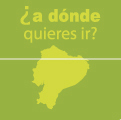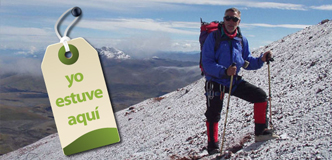 |
 |
|
|
| The Ecuadorian Amazon Jungle covers more than 1/3 of its territory |
|
|
|
 |
I was Here!!
Find out about Travelers experiences in Ecuador!!
|
|
|
|
| |
|
|
|
|
|
 /Travel in Ecuador / / / /Travel in Ecuador / / / |
|
|
| Ecuador and its 4 Worlds (Coast) |
|
|
infomundos
|
| |
|
|
| |
|
|
|
|
Pacific Coast (Costa)
Where Green Hills Meet the Beaches
Ecuador’s coast comprises hundreds of kilometers of extended, beautiful and mostly pristine beaches bordering the Pacific Ocean, where the lush green hills and tropical forests of the coastal cordillera frequently extend down to coastline itself, creating a fusion of color, sea and land.
The coastal region of Ecuador runs from north down to the south, bordered by the Andes on the west and the blue Pacific on the east. Populated by stretches of woodlands, including the last remnants of dry tropical forest in South America forests, and interspersed with open plains, the region provides a natural habitat and ecosystem for hundreds of species of fauna and flora.
The Ecuadorian coast has been occupied since pre-Columbian times by advanced cultures of skilled seafarers and ceramists. The oldest human settlements within the country’s present day borders date back thousands of years, evidence of which can be found on several Archaeological Sites as well as in many city museums.
The coast of Ecuador is populated by several large cities and numerous smaller towns, all with some historic value and significance, surrounded by scenic countryside and inhabited by smiling people. Unspoiled and culturally diverse, this land is famed for its rich and extravagantly varied cuisine, original handicrafts and numerous representations of folklore and popular art…
Each year, between June and October, large numbers of visitors converge on Ecuador’s coastline as the warm currents of the Pacific Ocean bring the mighty Humpback Whales to Ecuadorian waters. Their courtship rituals have now become one of the country principal tourist attractions on the Pacific Coast.
A vastly improved infrastructure, facilitating arrival, lodging and traveling, has made this zone a prime attraction for those wishing to sample the best of Ecuador’s renowned diversity.
|
|
| |
| |
Guayaquil
Historic, Commercial and Tourism City
Guayaquil, Ecuador’s largest city and most important seaport, is located along the western banks of the sprawling estuary of the Guayas River. A vibrant and cosmopolitan city, Guayaquil has undergone an extensive urban regeneration process over the last ten years and is now one of Ecuador’s major tourist attractions. Artfully combining the antique with the modern, not-to-be missed sites include the city’s distinctive waterfront, “Malecón 2000”; the colonial quarter of Las Peñas, the picturesque and colorful Cerro Santa Ana as well as the main churches, parks, plazas, museums and many others. |
|
|
|
|
| |
Esmeraldas
On the northern coast and amidst an intense tropical verdant nature, Esmeraldas is the epicenter of the Afro-Ecuadorian culture and the jumping off point for many of the country’s best beaches, as well as fascinating nature adventures on the nearby rivers and forests where ancient indigenous cultures still live in harmony with their primeval surroundings. A pristine and yet accessible destination, Esmeraldas is well worth a visit for those seeking either relaxation or adventure. |
|
|
|
|
| |
LA PLATA ISLAND
La Plata island is located off the central coast of Ecuador in the province of Manabí and forms part of the Machalilla National Park. This isolated islet, some 20 kilometers off the mainland, is home to some of Galapagos’ most famous inhabitants, such as blue-footed booby, frigate birds, albatrosses and sea lions. There island is also an excellent spot for snorkeling and scuba diving. Most trips to La Plata start from the picturesque town of Puerto Lopez, the main hub for the whale-spotting expeditions in the July to October period where the awesome yet peaceful presence of the humpback whales, leviathans of the ocean, can be enjoyed at close quarters |
|
|
|
|
| |
MACHALILLA NATIONAL PARK
The Machalilla National Park is unique in that it is home to both dry and humid tropical forests and in which extraordinary fauna and flora abound. The Park’s coastal areas are also dotted with mangroves, lagoons and beach habitats, as well as historical towns and other inhabited areas, including the Archaeological Site of Agua Blanca, managed by the local community. The Machalilla National Park also embraces one of Ecuador’s most beautiful beaches, Los Frailes, a popular destination with nature lovers and photographers alike..
|
|
|
|
|
| |
RUTA DEL SOL (SUNSHINE ROUTE)
Salinas, less than two hours by road from Guayaquil, is Ecuador’s most popular beach resort, famed for its excellent beaches, wide infrastructure, water sports facilities and rich cuisine. Along the coast, the small town of Montañita is a surfer’s paradise. The presence of giant waves has made the resort a frequent venue for international surfing competitions. Further north, in the province of Manabí, the most popular beaches are in Puerto Lopez, Puerto Cayo, Manta, Crucita, Bahía de Caraquez, San Vicente, Canoa and Pedernales. This stretch of the coast is known as the Sunshine Route. Closer to Guayaquil is Playas Villamil, a booming beach resort with long and wide stretches of sandy beaches, with facilities for sports and nature adventures, all accompanied by delicious food. While in the north of the country are to be found the beaches of Esmeraldas, with Same, Sua, Atacames and Tonsupa being among the most important.
|
|
|
|
|
|
|
|
|
|
|
|
|
|